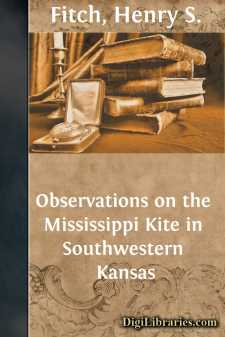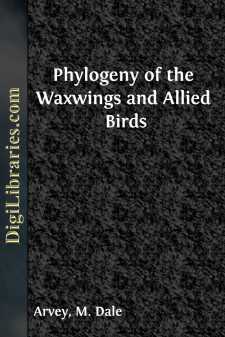Categories
- Antiques & Collectibles 13
- Architecture 36
- Art 48
- Bibles 22
- Biography & Autobiography 813
- Body, Mind & Spirit 142
- Business & Economics 28
- Children's Books 17
- Children's Fiction 14
- Computers 4
- Cooking 94
- Crafts & Hobbies 4
- Drama 346
- Education 46
- Family & Relationships 57
- Fiction 11829
- Games 19
- Gardening 17
- Health & Fitness 34
- History 1377
- House & Home 1
- Humor 147
- Juvenile Fiction 1873
- Juvenile Nonfiction 202
- Language Arts & Disciplines 88
- Law 16
- Literary Collections 686
- Literary Criticism 179
- Mathematics 13
- Medical 41
- Music 40
- Nature 179
- Non-Classifiable 1768
- Performing Arts 7
- Periodicals 1453
- Philosophy 64
- Photography 2
- Poetry 896
- Political Science 203
- Psychology 42
- Reference 154
- Religion 513
- Science 126
- Self-Help 84
- Social Science 81
- Sports & Recreation 34
- Study Aids 3
- Technology & Engineering 59
- Transportation 23
- Travel 463
- True Crime 29
Field Study of Kansas Ant-Eating Frog
by: Henry S. Fitch
Description:
Excerpt
INTRODUCTION
The ant-eating frog is one of the smallest species of vertebrates on the University of Kansas Natural History Reservation, but individually it is one of the most numerous. The species is important in the over-all ecology; its biomass often exceeds that of larger species of vertebrates. Because of secretive and subterranean habits, however, its abundance and effects on community associates are largely obscured.
The Reservation, where my field study was made, is the most northeastern section in Douglas County, Kansas, and is approximately 5½ miles north and 2½ miles east of the University campus at Lawrence. The locality represents one of the northernmost occurrences of the species, genus, and family. The family Microhylidae is a large one, and most of its representatives are specialized for a subterranean existence and a diet of termites or ants. The many subfamilies of microhylids all have distributions centering in the regions bordering the Indian Ocean, from South Africa and Madagascar to the East Indies, New Guinea, and Australia (Parker, 1934). Only one subfamily, the Microhylinae, is represented in the New World, where it has some 17 genera (de Carvalho, 1954) nearly all of which are tropical. G. olivacea, extending north into extreme southern Nebraska (Loomis, 1945: 211), ranges farther north than any other American species. In the Old World only Kaloula borealis has a comparable northward distribution. Occurring in the vicinity of Peiping (Pope, 1931: 587), it reaches approximately the same latitude as does Gastrophryne in Nebraska. The great majority of microhylid genera and species are confined to the tropics.
Nearly all ant-eating frogs seen on the Reservation have been caught and examined and individually marked. By November 1, 1954, 1215 individuals had been recorded with a total of 1472 captures. In the summer of 1950, Richard Freiburg studied this frog on the Reservation and his findings (1951) led to a better understanding of its natural history. The numbers of frogs studied by him however, were relatively small and the field work was limited to the one summer. The data now at hand, representing six consecutive years, 1949 through 1954, serve to supplement those obtained by Freiburg, corroborating and extending his conclusions in most instances, and also indicating that certain of his tentative conclusions need to be revised.
While the present report was in preparation, Anderson (1954) published an excellent account of the ecology of the eastern species G. carolinensis in southern Louisiana. Anderson's findings concerning this closely related species in a much different environment have been especially valuable as a basis for comparison. The two species are basically similar in their habits and ecology but many minor differences are indicated. Some of these differences result from the differing environments where Anderson's study and my own were made and others certainly result from innate genetic differences between the species.
The frog with which this report is concerned is the Microhyla carolinensis olivacea of the check list (Schmidt, 1953: 77) and recent authors. De Carvalho (1954: 12) resurrected the generic name, Gastrophryne, for the American species formerly included in Microhyla, and presented seemingly valid morphological evidence for this plausible generic separation.
G. olivacea is obviously closely related to G. carolinensis; the differences are not greater than those to be expected between well marked subspecies. Nevertheless, in eastern Oklahoma and eastern Texas, where the ranges meet, the two kinds have been found to maintain their distinctness, differing in coloration, behavior, calls, and time of breeding. Hecht and Matalas (1946: 2) found seeming intergrades from the area of overlapping in eastern Texas, but some specimens from this same area were typical of each form. Their study was limited to preserved material, in which some characters probably were obscured. More field work throughout the zone of contact is needed. The evidence of intergradation obtained so far seems to be somewhat equivocal.
Besides G. olivacea and typical G. carolinensis there are several named forms in the genus, including some of doubtful status. The name mazatlanensis has been applied to a southwestern population, which seems to be a well marked subspecies of olivacea, but as yet mazatlanensis has been collected at few localities and the evidence of intergradation is meager. The names areolata and texensis have been applied to populations in Texas. Hecht and Matalas (1946: 3) consider areolata to be a synonym of olivacea, applied to a population showing intergradation with carolinensis, but Wright and Wright (1949: 568) consider areolata to be a distinct subspecies. G. texensis generally has been considered to be a synonym of olivacea. Other species of the genus include the tropical G. usta, G. elegans and G. pictiventris.
Of the vernacular names hitherto applied to G....
















